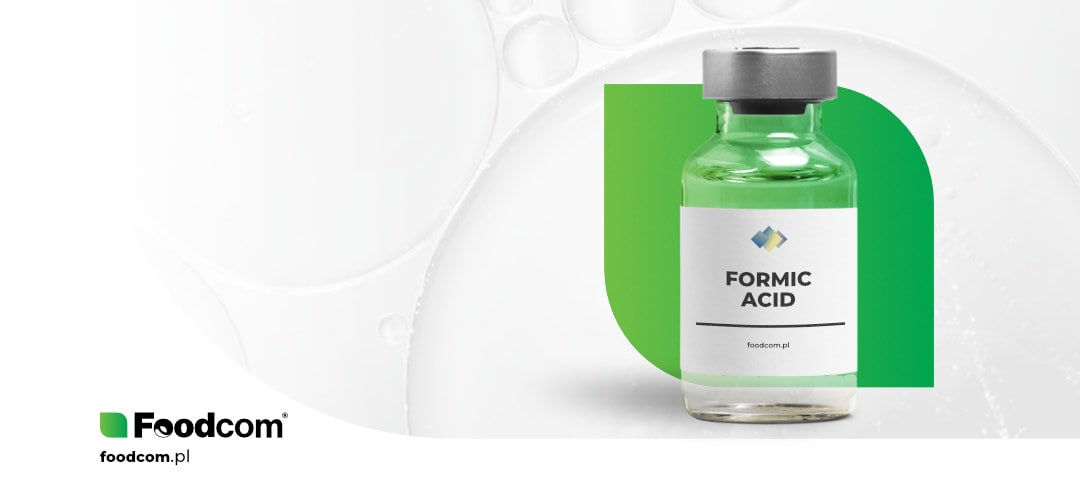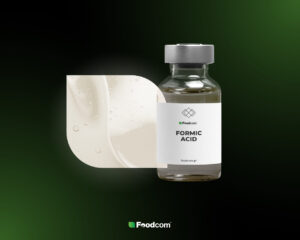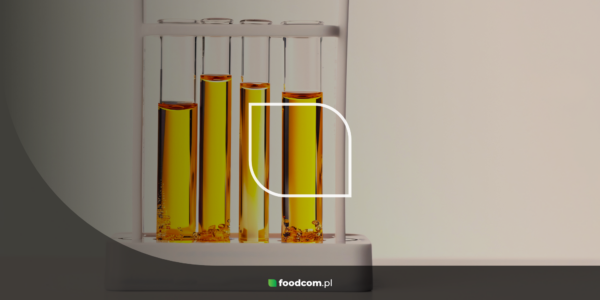- Formic Acid is an organic chemical compound with fungicidal and bactericidal properties.
- It is highly volatile and corrosive.
- Formic Acid is used in various industries such as food, feed, cosmetics, chemical, leather, and textile.
What is Formic Acid?
Formic Acid, also called Methanoic Acid, is an organic chemical compound belonging to the group of carboxylic acids. Compounds such as esters and salts, as well as the anion formed from Formic Acid, are commonly referred to as formates. The term ‘formica,’ from which the name is derived, is the Latin word for ‘ant,’ as Formic Acid is contained in ant venom.
Formic Acid also occurs naturally in stinging nettles or fruits and vegetables such as pineapples, apples, kiwis, onions, eggplants and cucumbers. On an industrial scale, it can be obtained in three ways: from carbon monoxide and Sodium Hydroxide, from carbon monoxide and methanol, or as a by-product in the production of Acetic Acid by oxidation of hydrocarbons.
Formic Acid is used as a preservative and antibacterial agent. In the food industry it is known as E236. Do you want to know more about this substance? Then be sure to read on!
Formic Acid properties
Formic Acid is a colorless liquid with a pungent odor. It is very volatile and mixes well with water. It is highly corrosive.
Formic Acid is used as a preservative because it has fungicidal properties and, at high concentrations and low pH, it also has bactericidal properties. Formic Acid has low toxicity, so it can be used as a food additive.
Formic Acid supplied by Foodcom S.A. has a shelf life of 36 months. It is recommended to store the product in a cool, dry place with a temperature below 20°C and to keep it away from alkalis and alkalizing substances.

Formic Acid uses
Formic Acid has numerous applications in industry. It can be used in:
- food industry,
- animal feed,
- chemical industry,
- cosmetic industry,
- medicine,
- tanning and textile industry,
- beekeeping.
In the food industry Formic Acid is used as a preservative. Due to its fungicidal and bactericidal properties, it prolongs the shelf life of food.
Formic Acid also finds its uses in animal feed. As a preservative, it prevents food spoilage and helps maintain the nutritional value of animal feed for a longer period of time. Formic Acid is an acidifier for feed and an antimicrobial agent that has a wide range of uses. It has been observed that the use of Formic Acid can reduce the incidence of Salmonella, Campylobacter and Escherichia coli in animals, resulting in higher efficiency and profitability. It also controls microorganisms in the digestive system of animals and effectively lowers acidity.
In the chemical industry, Formic Acid is used as a chemical reagent in laboratories and as a raw material for the production of various chemicals. What is more, because of its ability to kill fungi, it is often used as an ingredient in fungicidal and acidifying preparations. Formic Acid is also used in the detergent sector. It is a common ingredient in both industrial and household cleaning products.
Formic Acid is also added to cosmetics. It prolongs their shelf life and influences their pH value. In addition, Formic Acid can be used as an ingredient in perfumes, where it masks the unpleasant odor of other ingredients.
In medicine, Formic Acid is used for its vasodilating effect and blocking of pain and sensory receptors. It is therefore used as a warming and analgesic agent for conditions such as arthritis, rheumatism, neuralgia, and muscle and joint pain.
In the leather industry, Formic Acid is used to tan, dye and sterilize hides and skins, which has the added benefit of cleaning and softening the leather while giving it a high-quality finish. Formic Acid is also used in the textile industry to stabilize the colors of natural and synthetic fibers during the dyeing process.
Formic Acid is also an important substance in beekeeping. It is able to eradicate mites that pose a threat to bees and ensures that subsequent generations of honey bees in a colony are strong and healthy.
Formic Acid in the food industry
As mentioned earlier, Formic Acid is a preservative in the food industry with the designation E236. It is used in low concentrations to prevent the growth of fungi and to extend the shelf life of products such as marinades, juices, pickles, smoked fish or vegetable and fruit purees. It also supports fermentation in winemaking. When Formic Acid is added to cheese, it inhibits the growth of bacteria, but also regulates the acidity.
Formic Acid in cosmetics
Formic Acid is used as a preservative in cosmetics to prevent harmful microbial activity. It is especially important in creams that are applied with the fingers, as they are susceptible to contamination. Formic Acid is also used to regulate the skin’s pH, which should be slightly acidic. A pH that is too high or too low can lead to skin problems.
Formic Acid is contained in: shampoos, shower gels, hair dyes, face gels and eye creams.
Why Foodcom?
Our great team of Sales Support will help our Traders conduct the contract and business deals in a smooth and efficient way to ensure the best quality service to all our Business Partners. Our logistics team will take care of transportation and the financial department will be responsible for all matters connected with the financial part of the deal. Do not hesitate! Contact us.








